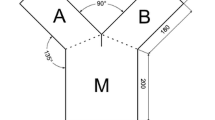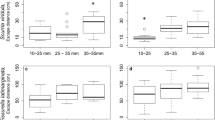Abstract
Since the 1980s the Ponto-Caspian gammarid Dikerogammarus villosus has spread throughout Europe while displacing native species and is predicted to invade further continents. After it was introduced into Europe in the 1890s the North American crayfish Orconectes limosus spread throughout Europe and served as a vector to displace native crayfish as well. In Lake Constance (Germany) the previously dominant gammarid Gammarus roeselii is subjected to both of these invasive crustaceans. In our experiments both species placed predation pressure on G. roeselii. Kairomone perception tests in a Y-maze revealed the capability of the gammarids G. roeselii and D. villosus to perceive and avoid the scent of the predator crayfish O. limosus. Both species also avoided the kairomone of the other gammarid, but did not avoid the scent of their own species. This taxa specific behavior suggests that taxa specific signals are used. This behavior can help the gammarids avoid shelters previously occupied by predators.



Similar content being viewed by others
References
Andersen TH, Friberg N, Hansen HO et al (1993) The effects of introduction of brown trout (Salmo trutta L.) on Gammarus pulex—drift and density in 2 fishless Danish streams. Arch Hydrobiol 126:361–371
Baumgärtner D, Jungbluth AD, Koch U et al (2002) Effects of infochemicals on microhabitat choice by the freshwater amphipod Gammarus roeseli. Arch Hydrobiol 155:353–367
Bernot RJ, Turner AM (2001) Predator identity and trait-mediated indirect effects in a littoral food web. Oecologia 129:139–146
Bij de Vaate A, Jazdzewski K, Ketelaars HAM et al (2002) Geographical patterns in range extension of Ponto-Caspian macroinvertebrate species in Europe. Can J Fish Aquat Sci 59:1159–1174
Bollache L, Devin S, Wattier R et al (2004) Rapid range extension of the Ponto-Caspian amphipod Dikerogammarus villosus in France: potential consequences. Arch Hydrobiol 160:57–66
Bruijs MCM, Kelleher B, van der Velde G et al (2001) Oxygen consumption, temperature and salinity tolerance of the invasive amphipod Dikerogammarus villosus: indicators of further dispersal via ballast water transport. Arch Hydrobiol 152:633–646
Casellato S, La Piana G, Latella L et al (2006) Dikerogammarus villosus (Sowinsky, 1894) (Crustacea, Amphipoda, Gammaridae) for the first time in Italy. Ital J Zool 73:97–104
Devin S, Beisel JN, Bachmann V et al (2001) Dikerogammarus villosus (Amphipoda: Gammaridae): another invasive species newly established in the Moselle river and French hydrosystems. Ann Limnol-Int J Limnol 37:21–27
Devin S, Piscart C, Beisel JN et al (2003) Ecological traits of the amphipod invader Dikerogammarus villosus on a mesohabitat scale. Arch Hydrobiol 158:43–56
Dick JTA, Platvoet D, Kelly DW (2002) Predatory impact of the freshwater invader Dikerogammarus villosus (Crustacea: Amphipoda). Can J Fish Aquat Sci 59:1078–1084
Dodson SI, Crowl TA, Peckarsky BL et al (1994) Nonvisual communication in fresh-water benthos—an overview. J N Am Benthol Soc 13:268–282
Gervais M (1835) Note sur deux espèces de Crevettes qui virent aux environs de Paris. Ann Sci Nat 2:127–128
Haas G, Brunke M, Streit B (2002) Fast turnover on dominance of exotic species in the Rhine river determines the biodiversity and ecosystem function: an affair between amphipods and mussels. In: Leppäskoski E, Gollasch S, Olenin S (eds) Invasive aquatic species of Europe. Kluwer, Dordrecht, pp 426–432
Hartmann J (1977) Burbot (Lota lota) in eutrophicated lake of Constance. Arch Hydrobiol 80:360–374
Hirsch P, Nechwatal J, Fischer P (2008) A previously undescribed set of Saprolegnia spp. in the invasive spiny-cheek crayfish (Orconectes limosus, Rafinesque). Fund Appl Limnol 172:161–165
Holomuzki JR, Hoyle JD (1990) Effect of predatory fish presence on habitat use and diel movement of the stream amphipod, Gammarus minus. Freshw Biol 24:509–517
Jazdzewski K (1980) Range extension of some gammaridean species in European inland waters caused by human activity. Crustac Suppl 6:84–107
Josens G, Bij de Vaate A, Usseglio-Polatera P et al (2005) Native and exotic Amphipoda and other Peracarida in the River Meuse: new assemblages emerge from a fast changing fauna. Hydrobiologia 542:203–220
Kats LB, Dill LM (1998) The scent of death: chemosensory assessment of predation risk by prey animals. Ecoscience 5:361–394
Kelleher B, Bergers PJM, van den Brink FWB et al (1998) Effects of exotic amphipod invasions on fish diet in the lower Rhine. Arch Hydrobiol 143:363–382
Kinzler W, Maier G (2003) Asymmetry in mutual predation: possible reason for the replacement of native gammarids by invasives. Arch Hydrobiol 157:473–481
Kinzler W, Maier G (2006) Selective predation by fish: a further reason for the decline of native gammarids in the presence of invasives? J Limnol 65:27–34
Lodge DM, Taylor CA, Holdich DM et al (2000) Nonindigenous crayfishes threaten North American freshwater biodiversity: lessons from Europe. Fisheries 25:7–20
Mörtl M, Mürle U, Ortlepp J et al (2005) Dikerogammarus villosus (Crustacea: Amphipoda) und Corbicula fluminea (Bivalvia: Veneroidea) im Bodensee. Institut für Seenforschung 5:15–30
Parmesan C, Gaines S, Gonzalez L et al (2005) Empirical perspectives on species borders: from traditional biogeography to global change. Oikos 108:58–75
Sala OE, Chapin FS, Armesto JJ et al (2000) Biodiversity—global biodiversity scenarios for the year 2100. Science 287:1770–1774
Schweng E (1973) Orconectes limosus in Deutschland insbesondere im Rheingebiet. Freshw Crayfish 1:79–87
Spencer CN, Mcclelland BR, Stanford JA (1991) Shrimp stocking, salmon collapse, and eagle displacement. Bioscience 41:14–21
Tittizer T, Schöll F, Banning M et al (2000) Aquatische Neozoen im Makrozoobenthos der Bundeswasserstraßen Deutschlands. Lauterbornia 39:1–72
Uehlinger U, Wantzen KM, Leuven RSEW (2009) Rhine river basin. In: Tockner K, Uehlinger U, Robinson C et al (eds) The rivers of Europe. Elsevier, London, pp 199–245
van der Velde G, Rajagopal S, Kelleher B et al (2000) Ecological impact of crustacean invaders: general considerations and examples from the Rhine river. Crustac Issues 12:3–33
van Riel MC, van der Velde G, Rajagopal S et al (2006) Trophic relationships in the Rhine food web during invasion and after establishment of the Ponto-Caspian invader Dikerogammarus villosus. Hydrobiologia 565:39–58
van Riel MC, Healy EP, van der Velde G et al (2007) Interference competition among native and invader amphipods. Acta Oecol 31:282–289
Werner S, Mörtl M, Bauer HG et al (2005) Strong impact of wintering waterbirds on zebra mussel (Dreissena polymorpha) populations at Lake Constance, Germany. Freshw Biol 50:1412–1426
Williams DD, Moore KA (1982) The effect of environmental-factors on the activity of Gammarus pseudolimnaeus (Amphipoda). Hydrobiologia 96:137–147
Wudkevich K, Wisenden BD, Chivers DP et al (1997) Reactions of Gammarus lacustris to chemical stimuli from natural predators and injured conspecifics. J Chem Ecol 23:1163–1173
Acknowledgments
This work was supported by the Sonderforschungsbereich Bodenseelitoral (CRC 454) of the Deutsche Forschungsgemeinschaft. The authors would like to thank Stefan Werner and all members of the ANEBO group for fruitful discussions on the recent invaders in Lake Constance. We thank Sonja Raub for correcting the English and style.
Author information
Authors and Affiliations
Corresponding author
Rights and permissions
About this article
Cite this article
Hesselschwerdt, J., Tscharner, S., Necker, J. et al. A local gammarid uses kairomones to avoid predation by the invasive crustaceans Dikerogammarus villosus and Orconectes limosus . Biol Invasions 11, 2133–2140 (2009). https://doi.org/10.1007/s10530-009-9492-6
Received:
Accepted:
Published:
Issue Date:
DOI: https://doi.org/10.1007/s10530-009-9492-6




